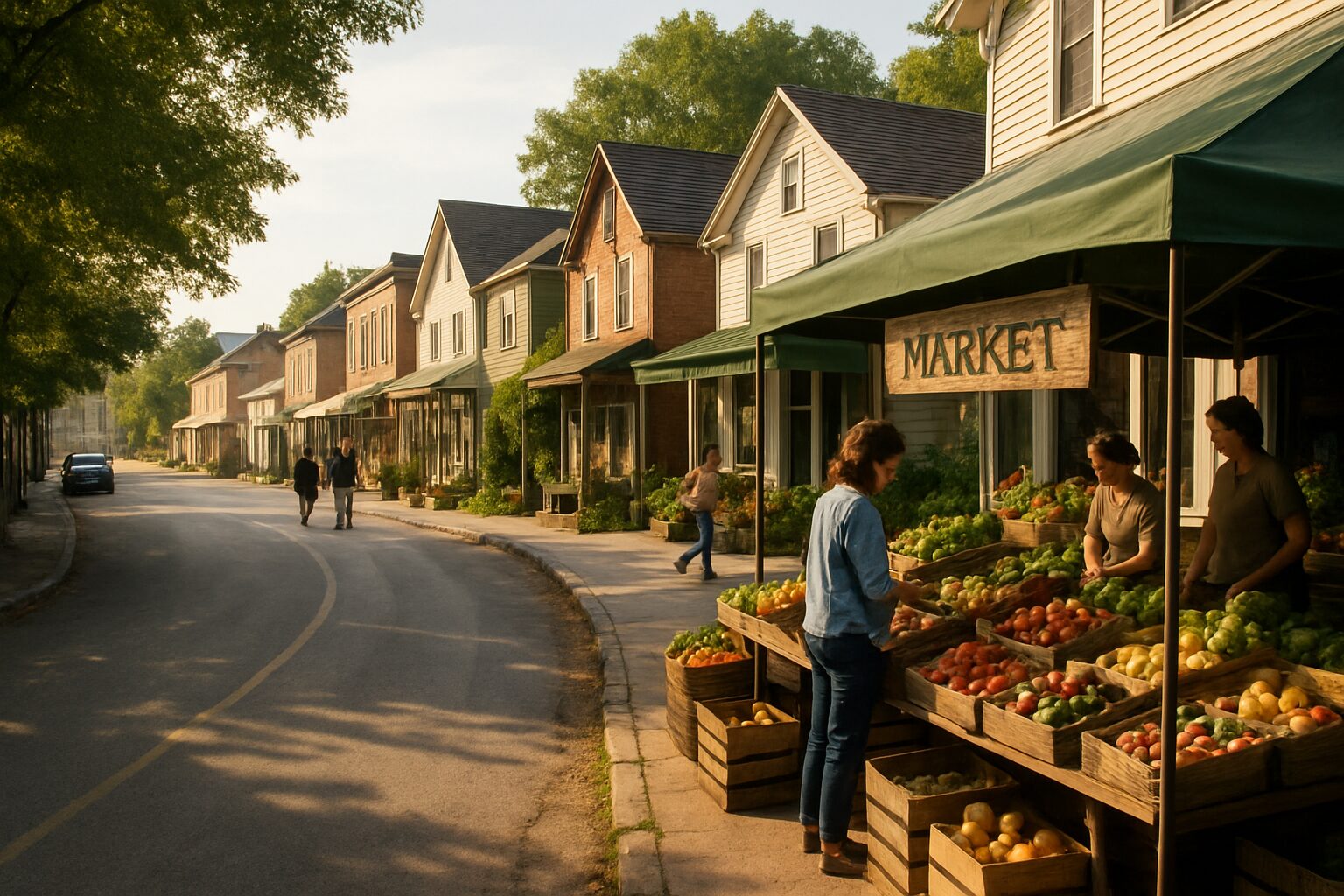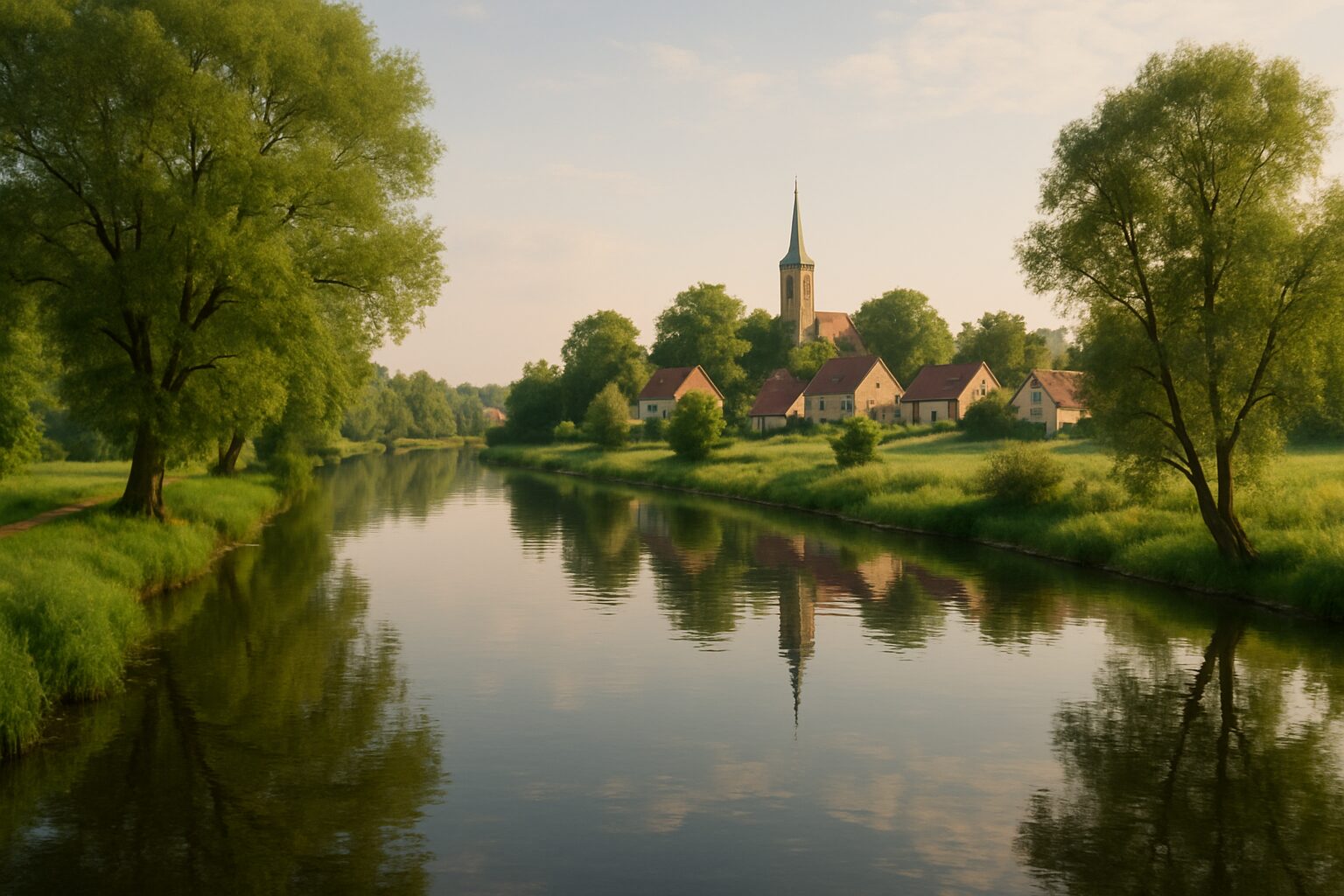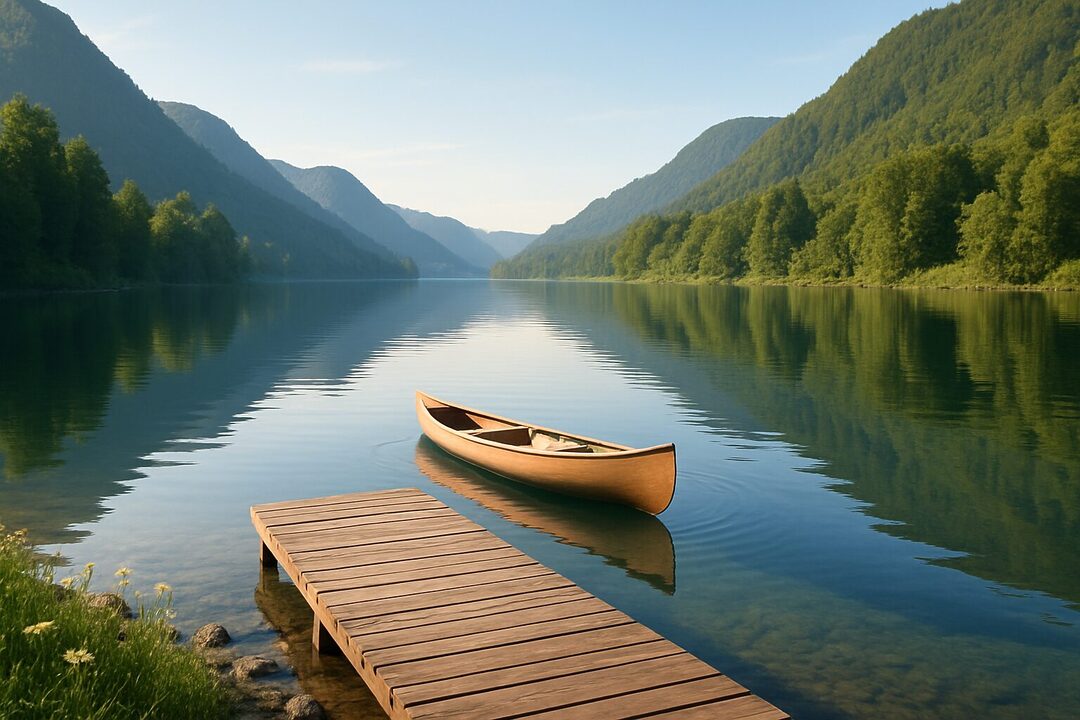In a world that often measures travel success by the number of countries visited or the checklist of landmarks conquered, slow travel emerges as a refreshing antidote to hurried tourism. This philosophy encourages a deeper connection with each destination, inviting travelers to fully immerse themselves in local cultures, savor authentic experiences, and embrace unexpected moments. For those seeking a more intentional and mindful approach, this guide opens a doorway to a rewarding way of wandering that prioritizes presence over pace. In 2025, as global awareness around sustainability and well-being surges, the art of slow travel offers not only richer journeys but also a path toward more meaningful and eco-conscious adventures. Whether it’s trading rapid transit for a scenic train ride through the countryside, or choosing Airbnb stays over hotels to feel more “at home” in unfamiliar places, slow travel transforms every trip into a soulful exploration. Delve into how embracing this mindful mindset can deepen your travel experiences, nurture your mental and physical health, and ultimately, reshape the way you see the world.
Understanding Slow Travel: A Mindful Approach to Exploring the World
Unlike traditional travel that often revolves around ticking off iconic sights and rushing through itineraries, slow travel centers on the experience itself. It is grounded in the belief that explorers benefit most when they allow themselves to slow down, absorb their surroundings, and engage meaningfully with the culture and environment. The concept stresses quality over quantity, echoing the principles of the Slow Food movement, which promotes enjoying local cuisine and traditions rather than succumbing to fast-paced, mass-produced options.
Slow travel is as much about the journey as the destination. It involves choosing transport methods that encourage a gentler pace, such as trains from Rail Europe or sustainable biking, over a chain of flights. Spending more days in a single location fosters not only familiarity but also opens doors to spontaneous encounters and authentic moments, whether that be learning to make traditional dishes with locals or attending a community festival.
Travelers who adopt this approach often opt for accommodations that embed them more intimately within the local fabric, such as Airbnb rentals or Couchsurfing arrangements, rather than isolated hotels. These choices contribute to smaller environmental footprints while enhancing cultural immersion.
Here are key characteristics that define slow travel:
- Extended stays: Allowing enough time to explore beyond tourist hotspots.
- Local engagement: Prioritizing relationships and cultural exchanges with residents.
- Flexible planning: Embracing spontaneity and unplanned detours.
- Sustainable choices: Opting for environmentally friendly transport and accommodations.
- Mindful presence: Fully appreciating the sights, sounds, and tastes of the moment.
| Aspect | Traditional Travel | Slow Travel |
|---|---|---|
| Itinerary | Highly scheduled, many destinations in short time | Flexible, longer stays in fewer places |
| Transportation | Frequent flights and rapid transit | Trains, biking, walking, and eco-friendly methods |
| Accommodation | Hotels and resorts | Local rentals, homestays, Airbnb, Couchsurfing |
| Experience | Surface-level sightseeing and photos | Deep cultural immersion and connection |
| Mindset | Ticking boxes | Embracing the journey |
For more insights into the essence of slow travel, insightful articles such as Oliver’s Travels Slow Travel Guide and Little Lost Travel’s Approach extend valuable perspectives on embracing mindful journeys.

The Remarkable Benefits of Adopting Slow Travel for Well-being and Connection
As more travelers seek authenticity over checklist tourism, slow travel has garnered attention for offering significant advantages not only to the individual but also to host communities and the environment. Here are some compelling benefits driving its rapid embrace in 2025 and beyond:
- Reduced Stress and Burnout: Speedy trips crammed with activities often leave travelers overwhelmed. Slow travel promotes relaxation and nurtures presence, helping travelers enjoy moments like sitting quietly at a seaside cafe or strolling through a forest trail without a race against time.
- Enhanced Physical and Mental Well-being: By encouraging activities such as hiking, biking, or walking rather than rapid transit, slow travel boosts cardiovascular health and promotes mindfulness, positively influencing mental health. According to studies highlighted on Serenity Trips Wellbeing, extended, calm immersion in natural and cultural settings can lower anxiety and improve overall mood.
- Deeper Cultural Insight: Spending more time within communities enriches cultural understanding. Conversations with locals—whether over meals at a neighborhood bistro or during traditional craft workshops—offer nuances often lost in hurried tours.
- Personal Growth and Flexibility: Embracing uncertainty, such as unexpected weather changes or sudden invitations to local events, cultivates adaptability and self-confidence. Trying new cuisines or housing arrangements (like shared rooms) can push boundaries, leading to memorable learning experiences.
- Cost-effectiveness: Staying longer in one place minimizes travel expenses tied to frequent flights or accommodations. Local rentals, such as an Airbnb with a kitchen, allow travelers to cook meals and reduce dining out costs, making slow travel appealing to budget-conscious visitors.
| Benefit | Description | Example |
|---|---|---|
| Less Stress | Allows moments of calm and appreciation rather than constant rushing | Spending an entire afternoon reading in a village park instead of rushing museums |
| Better Physical Health | Promotes walking, biking, hiking as main travel activities | Exploring a city’s old town via bike instead of taxis |
| Cultural Connection | Builds meaningful bonds with residents and customs | Joining a local cooking class or attending a village fiesta |
| Personal Growth | Fosters new skills and adaptability | Trying an unfamiliar dish or participating in community volunteer projects |
| Financial Savings | Reduces frequent traveling and expensive accommodations | Choosing long-term stays with local hosts versus hotels |
Detailed explorations on these health and mental benefits can be found at Serenity Trips Mindful Journeys and Balance Through Simplicity’s Slow Travel Tips.
Essential Tips for Beginners to Embrace Slow Travel with Ease and Intent
Starting on the slow travel path might feel unconventional, especially in a society driven by efficiency and speed. Yet, integrating simple principles can help transform any trip into a mindful adventure. Here are essential tips for beginners eager to transition into this fulfilling travel style:
- Minimize your itinerary: Keep plans flexible or even leave days unplanned to invite authentic experiences. Unanticipated moments often leave the deepest impressions. Websites like Celebrate Life’s Adventures provide useful ideas for planning fluid trips.
- Choose lesser-known destinations: Exploring spots off the beaten path reduces crowds and heightens cultural connection. Consider towns like Sedona, Arizona, or historic coastal lighthouses instead of iconic capitals. Travel platforms like Lonely Planet help identify hidden gems perfect for slow travel.
- Live like a local: Opt for Airbnb rentals or Couchsurfing hosted stays to experience daily life. Frequent local eateries discovered via online reviews or word-of-mouth rather than tourist hotspots. Markets and artisan shops offer unique souvenirs while supporting communities.
- Travel sustainably: Favor trains using services such as Rail Europe over flying when possible. Bicycle rentals and carpool arrangements contribute to a lower carbon footprint and connect travelers more tangibly with their environment.
- Pack light and smart: Limit luggage to essentials to ease mobility and reduce environmental impact. Use packing cubes for organization and multipurpose footwear suited for varied activities. Resources at Caballe Family Slow Travel Guide offer detailed packing strategies.
- Participate in local events: Intentionally seek out festivals, workshops, and traditions unique to your destination. Such involvement enriches your understanding and memory of the place while fostering connections that go beyond surface tourism.
| Tip | Purpose | Practical Examples |
|---|---|---|
| Flexible Itineraries | Encourages spontaneity and local discovery | Leaving an afternoon free for exploring a neighborhood market |
| Lesser-Known Destinations | Reduces tourist congestion, deepens immersion | Visiting Portland Head Lighthouse rather than a crowded landmark |
| Local Living | Promotes cultural engagement and authenticity | Staying in an Airbnb or Couchsurfing home, dining at family-run restaurants |
| Sustainable Travel | Reduces environmental impact | Choosing train travel via Rail Europe, renting bikes for city exploration |
| Packing Light | Eases mobility, reduces carbon footprint | Using packing cubes, multipurpose shoes, and minimal clothing |
| Local Events | Deepens connection and enriches experience | Taking part in local festivals or artisan workshops |
Additional practical advice can be found at resources like The Charming World and Intentionally Simple’s Guide.
Immersive Destinations Perfect for Slow Travel in 2025
Choosing the right destination can greatly influence the success of a slow travel experience. Preferably, places that balance accessibility with an abundance of serene landscapes, vibrant local cultures, and opportunities for sustainable tourism flourish as ideal spots. Here are thoughtfully curated destinations recommended for slow travel aficionados this year:
- Portland Head Lighthouse, Maine: Set in the expansive Fort Williams Park, this tranquil spot offers coastal charm combined with outdoor activities like kite flying and beachcombing. The nearby Bite Into Maine serves authentic lobster rolls favored by locals.
- Sedona, Arizona: Renowned for awe-inspiring red rock formations, Sedona affords hiking, star gazing, and wellness retreats, embodying the essence of connected travel and mindful living.
- Albuquerque, New Mexico: A confluence of Indigenous traditions, mid-century architecture, and museums, Albuquerque invites travelers to engage in fishing, hiking, and camping, enriching connections with its rich cultural tapestry.
- French countryside villages: Experience rustic farm-to-table dining, artisan markets, and centuries-old architecture while staying in cozy Airbnb cottages immersed in nature’s quiet embrace.
- Japan’s rural mountainous regions: Beyond Tokyo’s buzz, places like the Japanese Alps offer slow travel opportunities such as ryokan inns, hot springs, and rice planting festivals, perfect for immersive cultural exchange.
| Destination | Main Attractions | Slow Travel Highlights |
|---|---|---|
| Portland Head Lighthouse, Maine | Historic lighthouse, Fort Williams Park | Picnics, beach walks, local seafood at Bite Into Maine |
| Sedona, Arizona | Red rock formations, hiking trails, wellness spas | Star gazing, meditation retreats, Indigenous cultural interactions |
| Albuquerque, New Mexico | Old Town, museums, outdoor activities | Camping, fishing, cultural festivals, local artisan markets |
| French countryside villages | Farmers markets, vineyards, traditional architecture | Farm-to-table cooking classes, cycling, artisan workshops |
| Rural regions in Japan | Ryokan inns, rice fields, hot springs | Traditional festivals, local homestays, nature hikes |
For more recommendations on serene trip planning and hidden gems, visit Serenity Trips Planning and Serenity Trips Hidden Gems.

Slow Travel and Sustainability: Creating Positive Impacts for Host Destinations
Sustainability lies at the heart of slow travel, inherently designed to reduce environmental footprints and support local economies. Instead of rapid transit methods with large carbon emissions, this thoughtful approach prioritizes green travel and conscious spending.
Travelers embrace public transportation systems, such as Europe’s extensive network with Rail Europe, or elect carpooling and cycling, which foster deeper appreciation of local landscapes. Choosing locally operated tours and accommodations like Airbnb homes or community guesthouses ensures revenue stays within the community rather than multinational corporations.
Furthermore, slow travel encourages engaging with local producers at markets rather than major supermarkets or chain restaurants, thereby nurturing small businesses and authentic craftsmanship.
The following table summarizes key sustainable practices integral to slow travel and their benefits:
| Sustainable Practice | Benefit | Examples |
|---|---|---|
| Using public transport or trains | Reduces carbon emissions and local congestion | Traveling by Rail Europe and local buses |
| Supporting local businesses | Boosts community livelihood and cultural preservation | Buying crafts at markets, eating at family-run restaurants |
| Accommodation choices | Limits environmental impact compared to large hotels | Staying in Airbnb rentals, homestays, Couchsurfing |
| Reducing luggage weight | Less fuel consumption for transport, easier mobility | Light and versatile packing with reusable containers |
| Engaging in low-impact activities | Preserves natural sites and supports wellness | Hiking, cycling, kayaking over motorized tours |
Those interested in sustainable slow travel can find inspiring resources and tips at sites like Serenity Trips Sustainable and Little Miss Gem Travels.

As a 34-year-old Yoga Teacher, I am passionate about guiding others on their journey to mindfulness and well-being. With years of experience in various yoga styles, I create a welcoming environment that encourages personal growth and self-discovery. Join me in exploring the transformative power of yoga.


